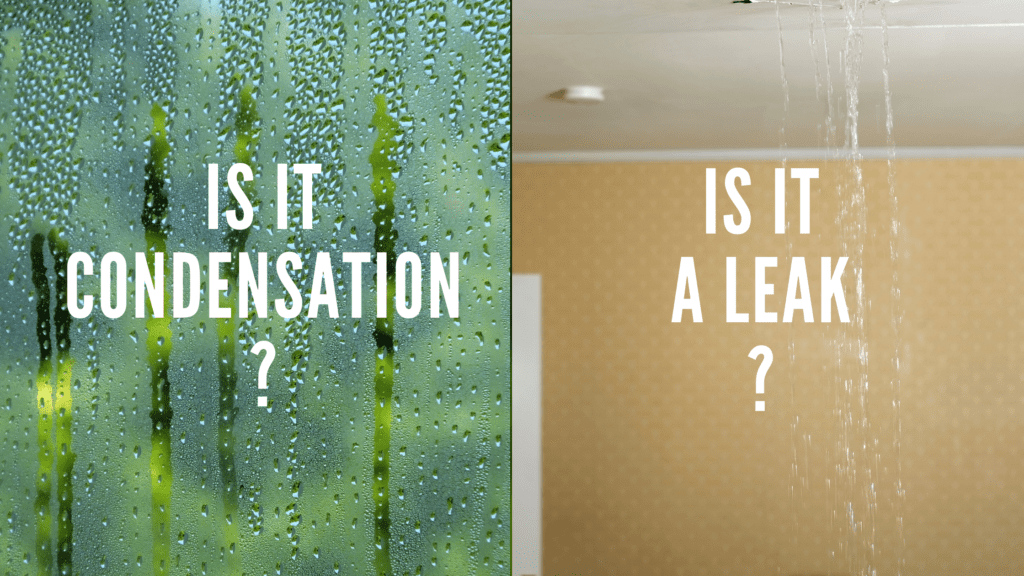
You wake up in the morning and you notice a wet spot on your ceiling. It wasn’t there before and there has been snow in Colorado lately. Why would there be a wet spot on the ceiling? Is there ice that is slowly melting or is it something else going on?
What is condensation?
If you remember from elementary science classes, there are three forms of matter; gas, liquid, and solid. We see water in these three forms all the time: water in a glass is a liquid, ice is a solid, and water vapor exists in our air all the time as a gas. The only difference in the water in these states is how hot or cold it is. That’s why ice is cold and water bubbles when you boil it.
With all that in mind, condensation happens when warm, wet air meets a cold surface. The cold surface cools down the air around it, changing the water from a gas to a liquid, which is the water droplets we see.
Is it dangerous?
Condensation that isn’t rectified could cause frost in your attic. This frost will melt into your insulation and wood where mold and mildew can grow. If it goes all the way through the wood and drywall, you can even see stains on your walls and ceiling. If it continues, it could even cause warping of drywall and wood as well!
So is it a leak or condensation?
If you want to know if the water on your ceiling is condensation, try going down this list:
- What room is it in? Condensation is very common in rooms where water is used the most, such as bathrooms, kitchens, and laundry rooms.
- What is the weather like? If you see water on your ceiling or windows, but it is not raining, it is likely it is condensation.
- What is the water on? If the water seems to be coming through a vent or window, it is possibly condensation. Water will condense onto cool surfaces like metal and glass due to how little heat they hold.
- What time of year is it? Condensation happens the most in winter when it is very cold and dry outside. It is possible in the summer as well, but we see it the most in winter.
- Do you have a humidifier? Many companies sell whole-house humidifiers to help with dry air during the winter. They are adjustable and many homeowners forget to change the setting on these throughout the year.
How do you prevent condensation?
Once you’ve determined you have condensation, taking care of it isn’t too difficult. You just have to reduce the humidity in your home. You can do this by ensuring the vents in your kitchen and bathrooms are properly hooked up and turned on when water sources are in use. If you do not have vents, you can also crack open a window to allow wet air to get out. You could also buy a dehumidifier to pull water out of the air.
If you have a whole-house humidifier, it is suggested that you turn it down in the winter. Below is a chart of suggested settings based on the temperature outside:

If after following these tips to try reducing the amount of humidity in your home doesn’t work, you should give us a call and we can help you find out if it is a leak instead! We can crawl into your attic or onto your roof to find the source of a stain or drip and help remedy the situation.